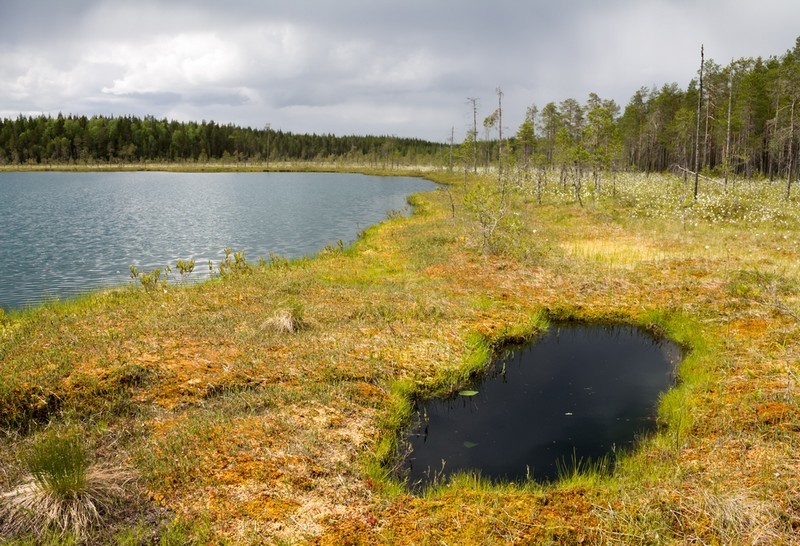Summary
Goals
- Knowing what bogs are and how they have formed.
- Being able to describe what bogs are like as habitats.
- Being familiar with different bog types.
- Knowing how bogs are used by humans and what kinds of ecosystem services they provide.
Summary
 Bogs are peat-producing ecosystems.
Bogs are peat-producing ecosystems.- Bogs can form in three different ways: from lakes, from forests, or as a result of post-glacial rebound.
- Spruce bogs are a forest-like bog type. They are characterized by the presence of spruce trees.
- Pine swamps are a forest-like bog type. They are characterized by the presence of pinetrees.
- Open bogs are typically low in nutrients.
- Fens are open bogs that are high in nutrients.
- Water meadows form near the shores of lakes or ponds.
- Bogs can be divided into three peatland complex types: rising bogs, aapa fens and palsa bogs.
- Key words: bog, peat, carbon sink, bog types, spruce bog, pine swamp, open bog, fen, water meadow, aapa fen, rising bog, palsa bog.